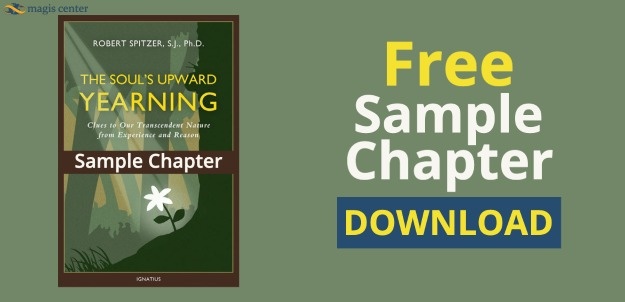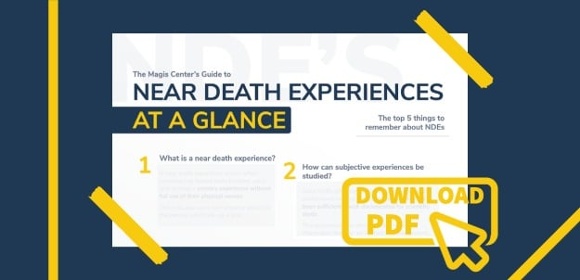Can science disprove God? Many of those within the landscape of modern science would reply with an adamant “yes.” However, Fr. Spitzer would beg to differ. In fact, throughout the course of Fr. Spitzer’s lecture, he presents four profound pieces of evidence which indicate that our universe has a beginning, possesses intelligent design, and contains rational animals that possess a transphysical soul—all of which ultimately are predicable of a supreme, intelligent being.
Science Cannot Disprove God
Fr. Spitzer begins by asserting that it is quite difficult to disprove the existence of God, as it is difficult to disprove anything at all, even based on observational evidence. Meaning since difficulty arises when trying to disprove thoroughly even that which is physical, a being like God who is beyond the “event horizon” is twice as difficult to disprove. However, if science could prove that the universe does not have a beginning, then it would follow that there could theoretically not be a God.
Fr. Spitzer acknowledges four pieces of evidence that indicate the creation of a universe and an argument of an intelligent creator:
- Space-Time Geometric Proof for Creation
- The Law of Entropy
- The Anthropic Coincidences in Creation
- Near-Death Experiences
Space-Time Geometric Proof for Creation
Fr. Spitzer states that there must be a beginning of time for the universe to move from nothing to something. Although general scientific thought permitted the notion of time going back infinitely for a while, after 1927, there has been a radical shift in our understanding of cosmological physics. The cause of this shift in thought is Fr. Spitzer’s first piece of evidence for a Creator.
During the 20th century, three scientists, Arvind Borde, Alan Guth, and Alexander Vilenkin, posed the question as to whether or not physics could prove that the universe has a beginning. They provided an answer to this question through the Borde-Guth-Vilenkin Proof. The goal of the proof was to challenge multiverse, static, and oscillating universe theories and demonstrate that the universe has a starting point. The theorem goes as follows:
- The greater the distance a galaxy is from us, the faster its recessional velocity will be.
- The further into the future we go, the greater the recessional velocity will be.
- The relative velocity of projectiles (like a rocket ship) must decrease as recessional velocities increase (into the future).
- The further we go into the past, the faster the relative velocities must have been.
- At some point in the past, all relative velocities will reach the speed of light (the maximum velocity of physical energy in the universe).
The proof concludes that the rate of expansion of the universe is greater than zero, and all universes must have a beginning, as every inflationary rate is greater than zero. Thus, the B-V-G proof strongly indicates an absolute beginning of all physical reality.
Law of Entropy
The second piece of evidence Fr. Spitzer presents to indicate the creation of a universe and an argument of an intelligent creator is the law of entropy, or what is also referred to as the Second Law of Thermodynamics. Fr. Spitzer’s argument is as follows:
- Useful work must be produced by ordered physical systems, as disordered or random systems cannot do anything.
- Every time work is done, a physical system moves slightly from order to disorder, meaning it loses a small amount of its order.
- This process is irreversible. Disordered systems do not move back spontaneously to ordered systems. Such an action would be the equivalent of striking a pool ball into a triangle of pool balls. After being scattered, they return to the exact triangular formation—each ball in the exact same position it was before.
- If the universe is an isolated physical system, and it has existed for an infinite time, it would be at maximum entropy today. In other words, it would be at maximum disorder, incapable of doing anything.
- But in fact, our universe has a very low entropy which implies that there is plenty of order left within it.
- Therefore, our universe has not existed for an infinite amount of time. It has a beginning.
Entropy shows exactly what the B-V-G Theorem shows: it is highly likely that the universe has an initial creation point.
Anthropic Coincidences in Creation
Anthropic coincidences describe highly improbable conditions of the universe necessary for the origination and development of life forms. According to Fr. Spitzer, for life to occur, there must be initial conditions and universal constants. Meaning if initial conditions of low entropy and the limits of universal constants are not met, it is impossible for life to form.
However, Fr. Spitzer explains that the likelihood of low entropy at the time of the Big Bang would be 10 to a power which goes on to have more zeros than the universe can hold. Meaning the fact that we have the implicit order and design of our universe is nothing short of a miracle. He proposes an argument for the possibility of supernatural design:
- The values of universal constants and the entropy of the universe could have been almost anything at the time of the Big Bang.
- Yet the range of possible anthropic values (which give rise to life) is extremely small, and our universe's 20 constants conveniently fall exactly within this range.
- Therefore, something, or someone, is responsible for the profoundly improbable creation of our universe and life forms.
Fr. Spitzer posits that all three pieces of evidence, B-V-G, Law of Entropy, and anthropic coincidences, present a scientifically valid argument for the existence of a transcendent Creator who intelligently designed our universe.
Near-Death Experiences
The last piece of evidence Fr. Spitzer presents is tailored towards the existence of a transphysical soul. He presents studies conducted on those who experienced clinical death and some level of immaterial and scientifically confounding experience. Clinical death can be understood as the absence of electrical activity in the cerebral cortex and in the lower brain. The four studies he presents each indicate a different aspect and effect of clinical death and NDEs. There are as follows:
- Dr. Kenneth Ring: Study of NDEs and Their Effect on the Blind—Dr. Ring demonstrated that some blind individuals who experienced an NDE possessed sight for the first time.
- Dr. Melvin Morse: Study of NDEs and Death Anxiety in Children—Dr. Morse found that children who experienced an NDE had significantly less death anxiety and possessed an air of peacefulness.
- Dr. Pim Von Lommel: The Lancet Study—Dr. Pim recorded experiences of NDE patients who experienced consciousness even after clinical death.
- Gallup Study of NDEs—The Gallup Study was conducted on millions of Americans and found that many who experienced an NDE were able to recall events that occurred when they were clinically dead, like a conversation in another part of the hospital or the location of a shoe that was hidden on a ledge multiple stories above.
Fr. Spitzer claims that the overwhelming amount of clinical studies and evidence suggests that there is something going on that is not of this world, the only suitable explanation being the existence of a transphysical soul.
The Relationship of God, Science, and Creation
The four pieces of evidence presented by Fr. Spitzer challenge the misconception that science is incompatible with God. In fact, Fr. Spitzer argues that something like scientific atheism is not a logical conclusion of science but rather a personal choice, as one would have to ignore the Law of Entropy and blatant anthropic coincidences to hold such a position.
We have overwhelming evidence to indicate the existence of a Creator and the beginning of the universe, more than science has ever possessed. But, in some regard, this evidence remains lost to many people. Fr. Spitzer claims that now is the time to approach science, God, and Creation in a manner that will truly help others cross over the threshold toward the logical synthesis of faith and reason.
Watch the entire presentation below:



